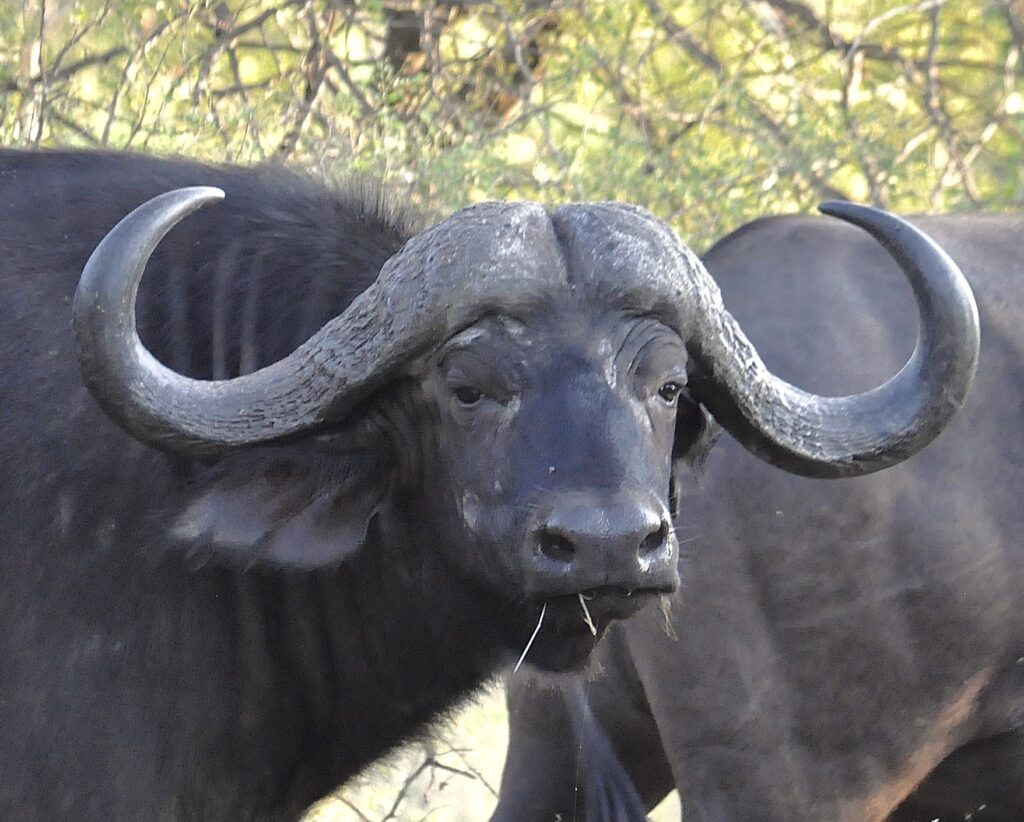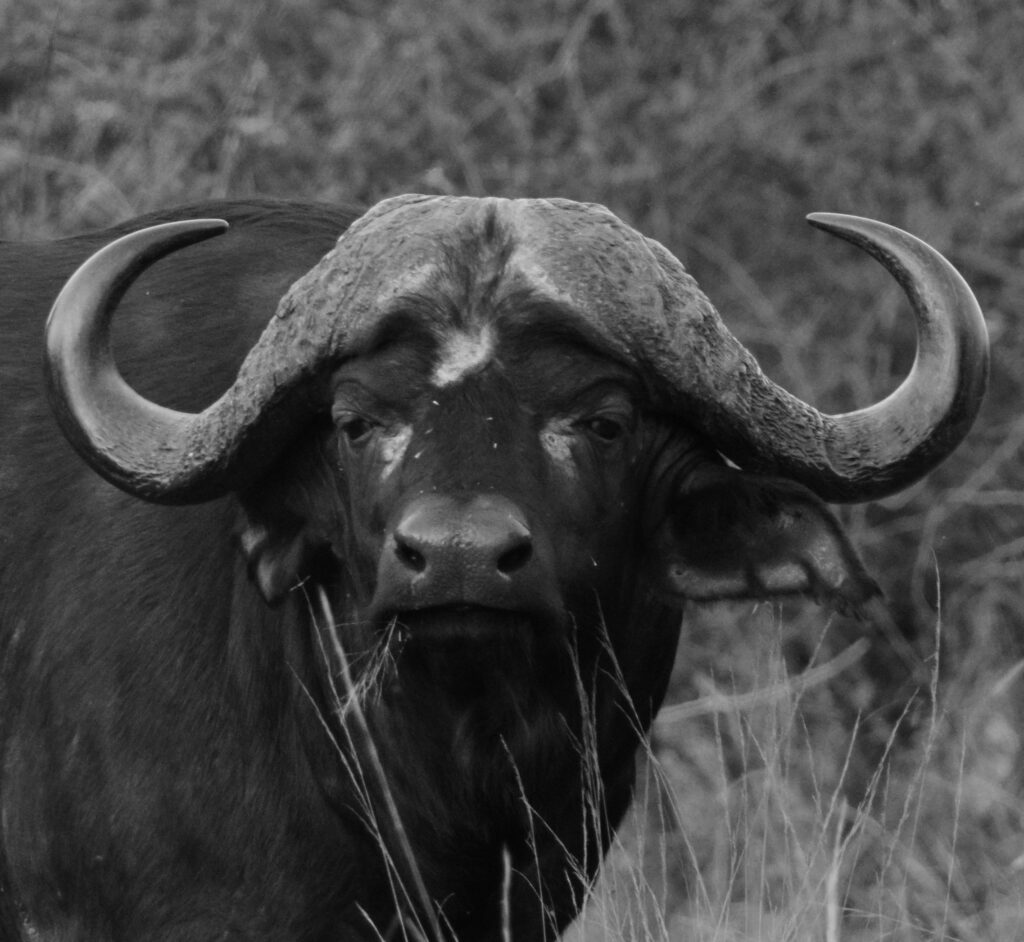
The buffalo is one of Africa’s largest and most common herbivores and also the most common of the BIG5 – but the buffalo can be extremely dangerous.
The Cape Buffalo, also known as Black Death, is said to have killed more big game hunters than any other animal in Africa.
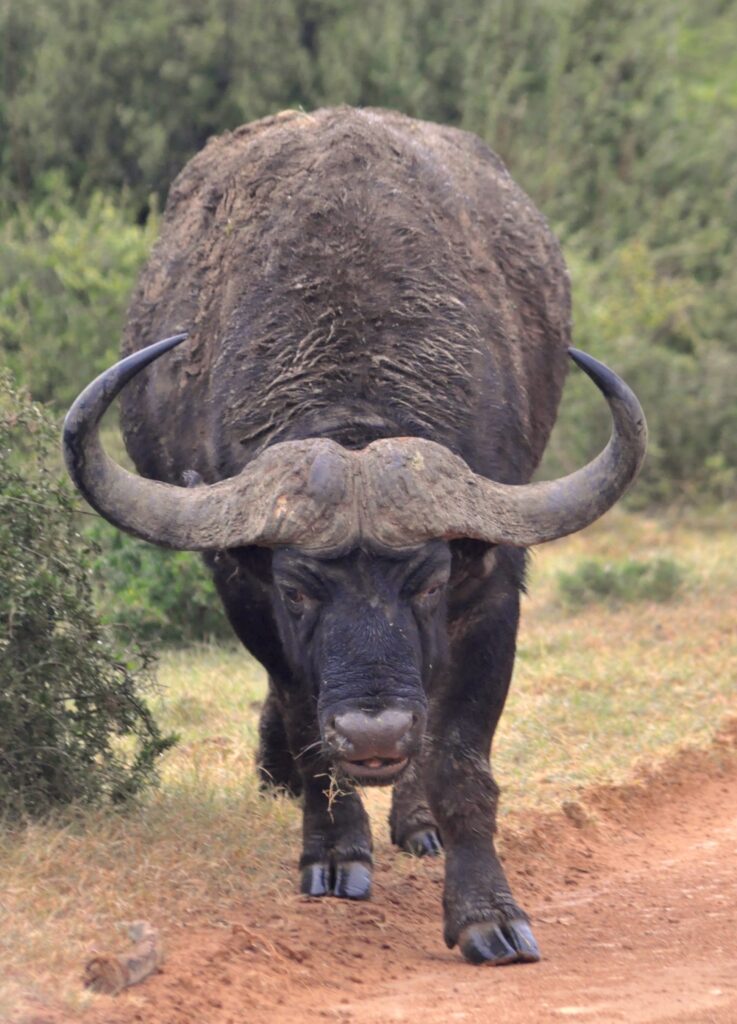
COMMON NAME:
African buffalo
SCIENTIFIC NAME: Syncerus caffer
TYPE: Mammals
DIET: herbivore
GROUP NAME: Herd
SIZE: 1,2 -1,5 m tall
WEIGHT:
Male: Bull – 650 to 800 kg.
Female: Cow – 550 to 700 kg
Common lifetime: 26 years
There are four distinct subspecies of the African buffalo where the Cape buffalo is the most common and also the largest one. Cape buffalo, is found in Southern and East Africa. There is also the forest buffalo – which is the smallest subspecies, common in forest areas of Central and West Africa, and the two other are the West Africa savanna buffalo, and the Central Africa savanna buffalo.
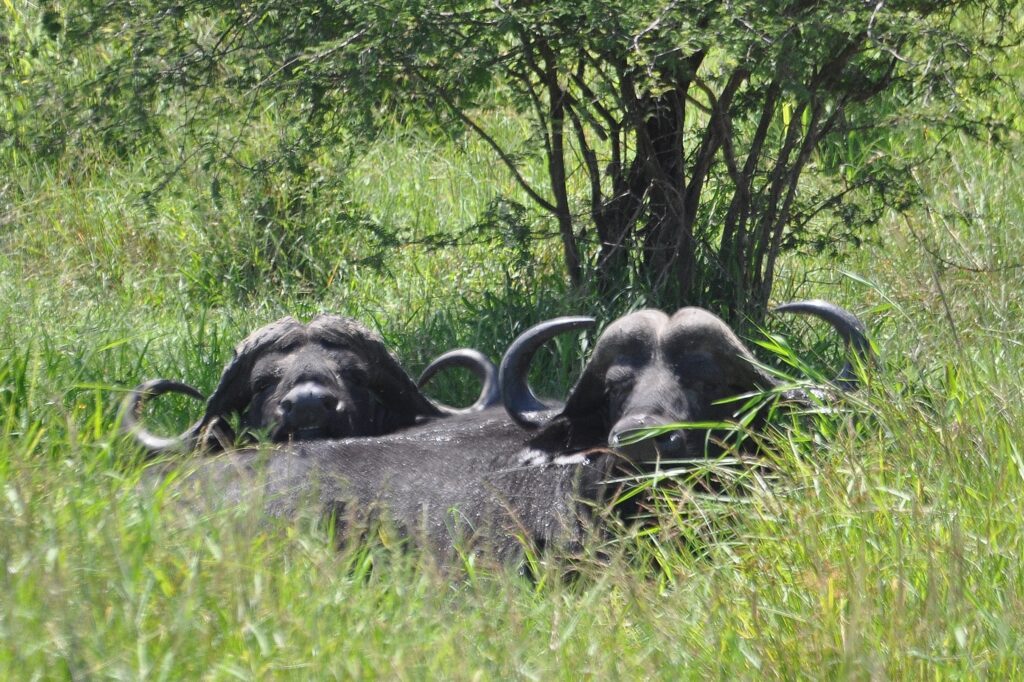
HERDS
Both in the Kruger National Park and in the Hluhluwe Imfolozi Park we have seen buffalo herds in numbers of 100-200.
July 2014 –
We were driving in the south part of the Kruger National Park – a herd of over 100 came walking from the Crocodile River – after drinking water . They were crossing the road in front of us – and we had to wait for quite a while before we dared to drive on. It was interesting though to watch such a big number of Buffalo, from large males to smaller females and calves.
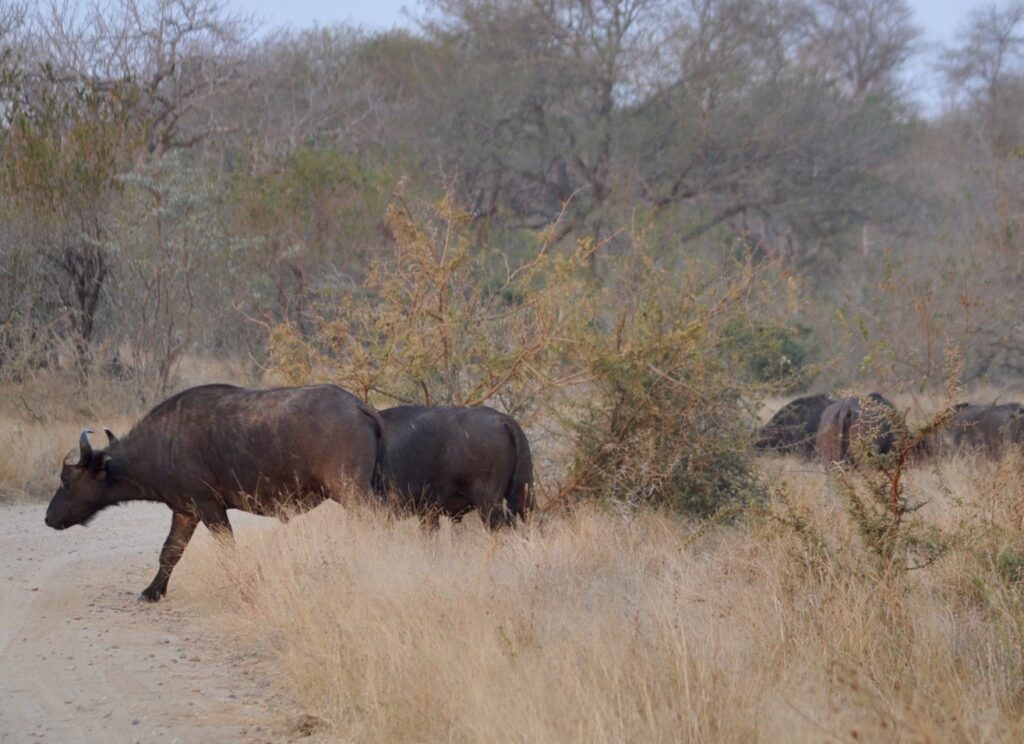
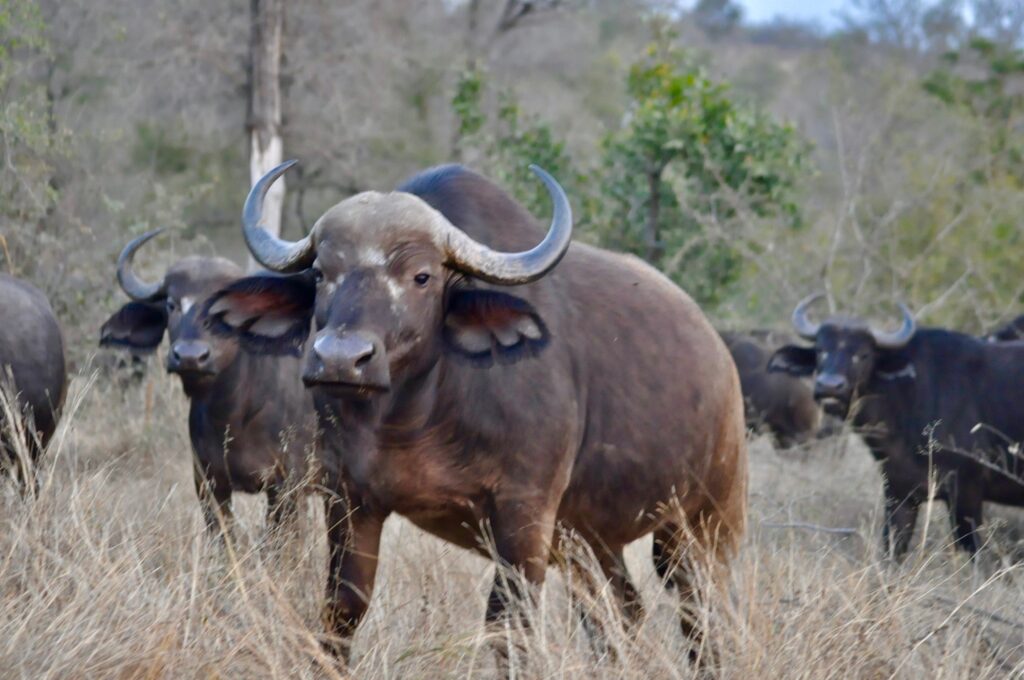
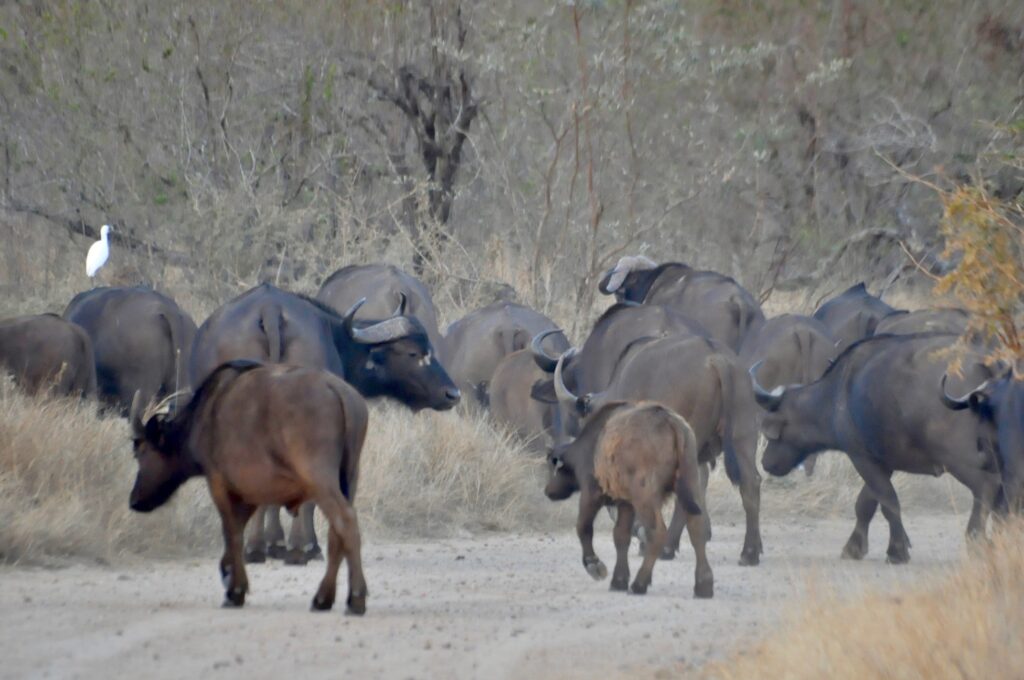
July 2015 – in Hluhluwe Imfolozi Park:

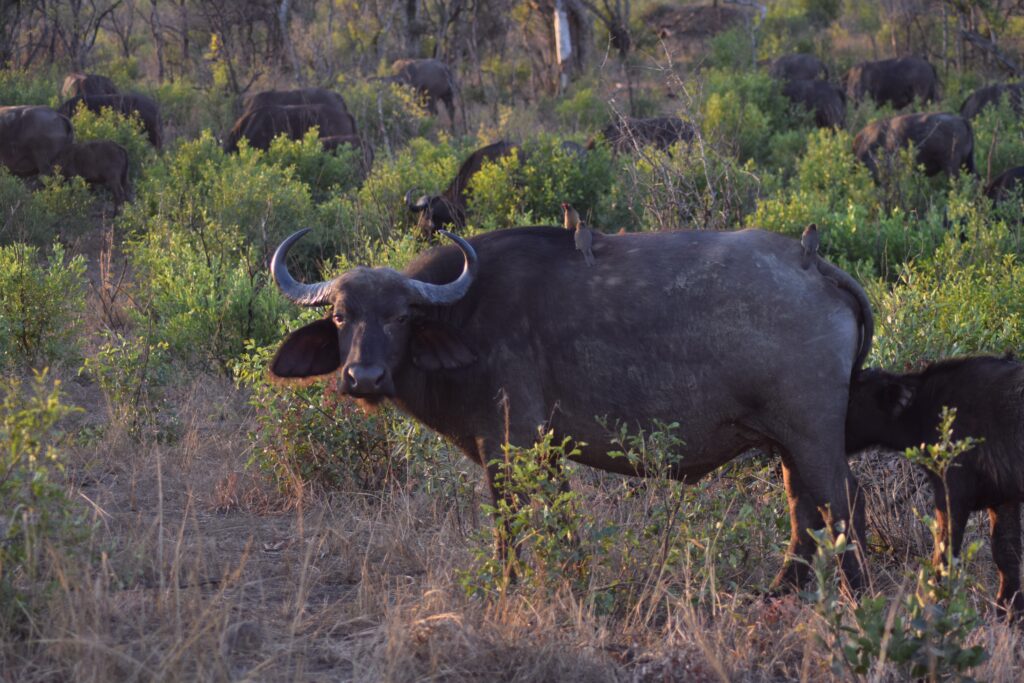
The African buffalo have a complex social structure based on what scientists call a “dominance hierarchy”. This means that social cohesion in the herd is largely governed by dominant males and females. Dominance is established by the strength, size and age of a given buffalo combined with their interactions with other members of the herd.
Both males and females travel together in the same herd, with a group of related females forming the core of the herd, while a group of subordinate males and older animals form sub-herds. Adding to this complexity, during the dry season males split off from the herd and form bachelor groups. These groups rejoin the main herd in the wet season to mate with females.
There is also strength in the size of the herd, the larger the herd the more they are able to protect themselves from predators.When lions are following large or smaller herds of buffalo, waiting for a chance to catch and kill one, the buffaloes will group together – often forming a circle around the young – and try to stand their ground in an effort to defend their young and each other.
Lions are also often injured or killed by buffaloes, especially by the bulls which can cause a lot of damage with their horns as well as by stomping on the lions with their hard hooves.


The older males which leave the herds and spend most of their time alone – prefer to find places usually around water with thick bush to shelter.
These older lone bulls are known as ‘dagga boys‘, a slang term for mud, and refers to the fact that these old males enjoy much of their time relaxing in mud baths.
It is the ‘dagga boys’, that can be extremely dangerous. Lacking the protection on the herd, they feel that the best defence is attack. They are notorious for over-reacting and will charge at the slightest irritation.
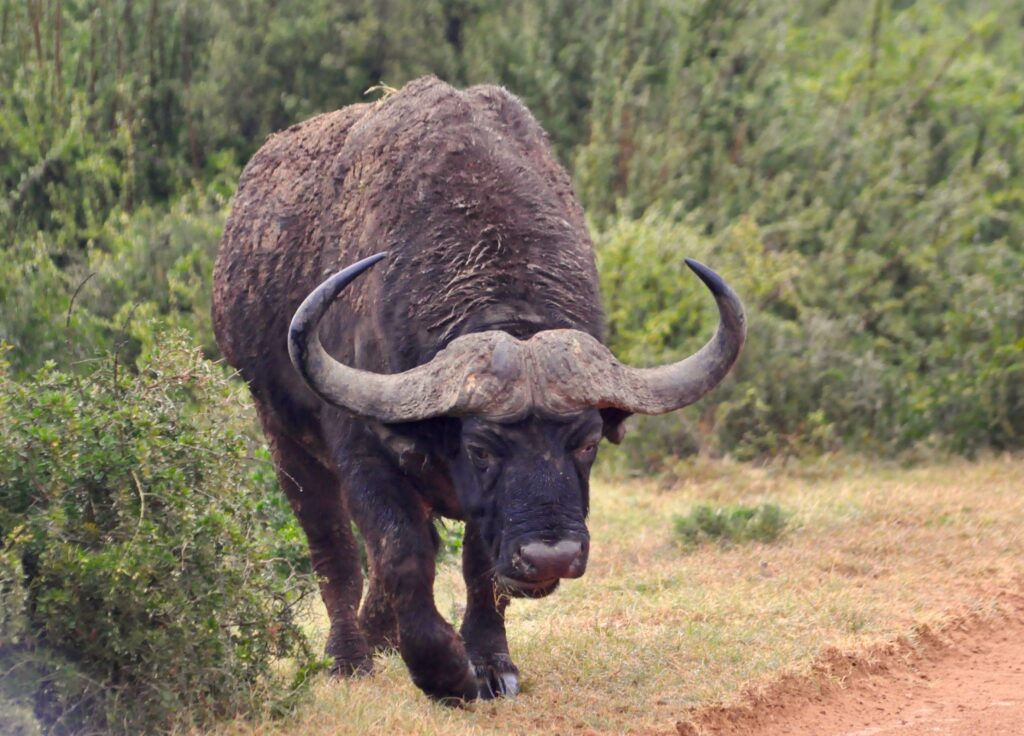
THE HORNS
Horns can help distinguish age and sex. In large adult males, the horns meet in the middle of their heads and are joined by a hard shield called a “boss.” This creates a helmet-esque formation. The horns are used for defense and to determine dominance for mating. The larger and thicker the horns in adult males, the more likely this male is to be higher ranked in the dominance hierarchy of the herd.
Female buffalo horns do not have a “boss”, they are narrower and smaller, allowing researchers to distinguish between male and female buffalo more easily.
CALFES
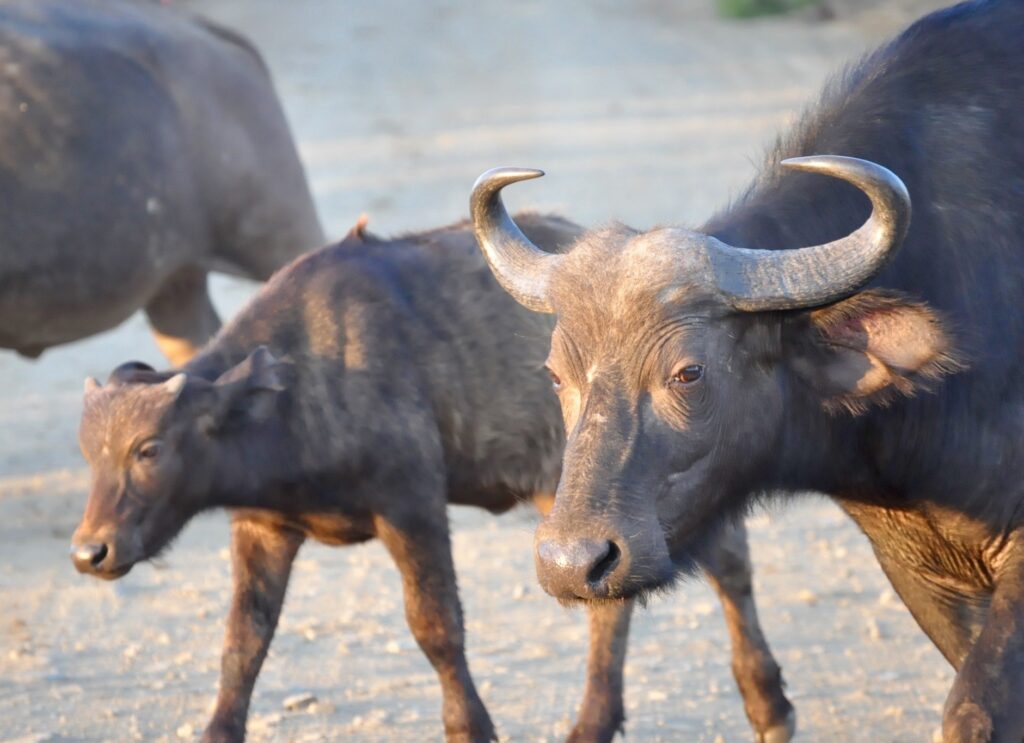

Buffaloes are pregnant for about 11 and a half months before giving birth to new calves. This occurs only in the rainy season. Thanks to more abundance of vegetation and drinking water during the rainy season, the newborn calves have a higher chance of survival than if they were born during the dry season. Calves stay with their mothers for about one year before they become more independent within the herd. Males leave to join bachelor groups once they reach two years of age.
Other facts:
- African buffalo is the only species of wild cattle that can be found in Africa.
- The African or Cape Buffalo are not related to the slightly larger Wild Water Buffalo of Asia
- Buffalo are truly good swimmers
- Cape Buffalo have 4 times the strength of an Ox
- Buffalo’s kill more hunters than any other species
- African buffalo is well known for its exceptional memory. It will recognize a person (such as hunters) that hurt it in the past and it will attack it at their next encounter. Same is with lions. They will “preventively” kill cubs of lions that are known attackers of the herd.


